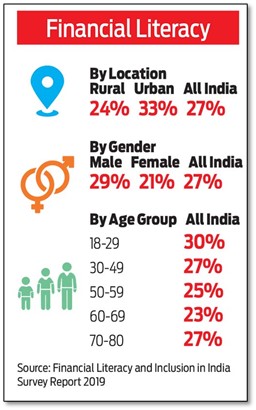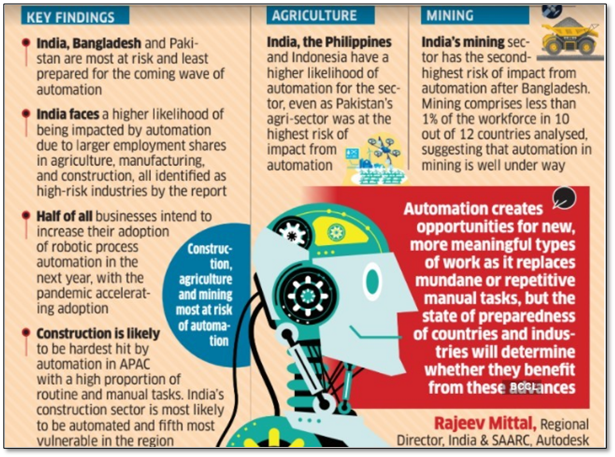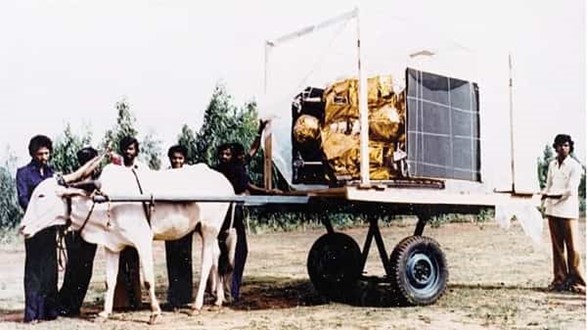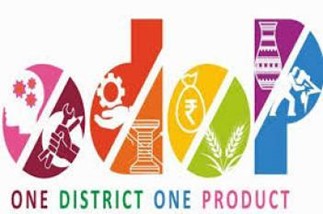Thursday, 22nd July 2021
India gets its first invite for Troika Plus meet on Afghanistan
In News
Russia called for including India and Iran in the extended ‘Troika’ (Troika Plus) talks, a Moscow-led group aimed at facilitating the intra-Afghan peace negotiations. Currently, Russia, the US, China and Pakistan are part of the Extended Troika.
Details of the current development
- The efforts for speeding up the peace process in Afghanistan have been accelerated as the withdrawal of US-led forces from Afghanistan about to complete.
- Russia has been holding the Moscow format talks on Afghanistan. India has been invited for this format of talks that involved Russia, Afghanistan, Pakistan, China, and Iran.
- Russia remains a key player to address the impasse in Afghanistan amid the Taliban surge and has deep interests in the stability of Afghanistan as any spread of terror and extremism impacts Central Asian states with the possibility of spill over into the Russian Caucus region.
Recent Development on India’ stands on Afghanistan peace process
- At the latest Shanghai Cooperation Organisation (SCO) meet in Dushanbe, India advised the Taliban to abide by the Moscow format and Doha process (talks in Qatar), and Istanbul processes (an initiative of Turkey and Afghanistan) related to peace in Afghanistan.
- India asked the Taliban to ensure that neighbours (Iran & Central Asia) are not threatened by terrorism, separatism and extremism amid fears that the Taliban and splinter groups might spread into Central Asia disturbing the secular and pluralist culture of the region.
- Earlier, in Moscow, India noted that the basis for the India-Russia-Iran partnership on the lines of that followed in the mid-1990s still remain valid as India asserted that the legitimacy of who ruled Afghanistan cannot be ignored.
India’s concern and interest in Afghanistan
- India was not present at the last Troika Plus meet in Moscow in March 2021. Pakistan, however, participated in the meet held before the US decision to withdraw from the Afghan theatre.
- India has taken part in Doha talks where Taliban participated. But there is an apprehension that Pakistan, where sanctuaries of Taliban militia exist may use its influence on the Taliban against India.
- Role and growing influence of China in this region is also a cause of worry for India.
- New Delhi is also concerned about growing violence levels in Afghanistan ever since talks began. India has invested more than USD 2 billion in building essential infrastructure that includes schools, parliament building and dams in Afghanistan. It also plays a prominent role in training the Afghan National army.
Source:
- Russia gives India its first invite for Troika Plus meet on Afghanistan
- Russia wants India, Iran to join Extended Troika for Afghan peace process
- India’s message to Taliban: Stick to Moscow, Doha and Istanbul plans
- Russia backs talks with Taliban, says Delhi, Moscow must regularly exchange notes on Afghanistan
- Jaishankar: Talks only answer… Afghanistan future can’t be its past
- ‘Moscow Format’: An Attempt in Right Direction
Policy transmission improves post external benchmarks
In News
The transmission of policy repo rate changes to deposit and lending rates in the banking system has improved since the introduction of external benchmark-based pricing of loans, as per the RBI Bulletin.
Findings of the RBI Bulletin
- Increase in share of loans: Data collected from banks by the RBI suggests that the share of outstanding loans linked to external benchmarks increased from as low as 2.4 per cent during September 2019 to 28.5 per cent during March 2021, contributing to significant improvement in transmission on the back of persisting surplus liquidity conditions.
- Better than MCLR: Quarterly periodicity in re-setting interest rates for outstanding loans linked to external benchmark as against annual for MCLR linked loans has contributed to the improvement in pass-through to lending rates on outstanding loans.
- Difference in monetary transmission: The pace of transmission has varied across bank groups with foreign banks passing the most of the rate cuts to their clients compared to public sector banks. This is largely because of the composition of the liability structure. Since public sector banks focus more on retail deposits their pricing power is restricted because of competition from alternative instruments like small savings schemes.
External Benchmarking Rate
- The RBI had made it mandatory for banks to link all new floating rate personal or retail loans and floating rate loans to MSMEs to an external benchmark like the Repo rate effective October 1, 2019. As per RBI, banks can choose any of these external benchmarks:
- RBI's repo rate
- Government of India three-month Treasury Bill yield published by the Financial Benchmarks India Private Ltd. (FBIL)
- Government of India six-month Treasury Bill yield published by the FBIL
- Any other benchmark market interest rate published by the FBIL
- As banks are free to choose the external benchmark for pegging lending interest rates, many banks have opted for the repo rate as the benchmark since it is easier to understand for the borrower and can be less volatile as compared to the other market-linked external benchmarks.
- Apart from the external benchmark, the margin (spread) of the bank and credit risk profile of the customer also play an important role in determining the effective interest rate on the loan.
Sources:
Financial literacy curriculum
In News
The Central Board of Secondary Education (CBSE) and National Payments Corporation of India (NPCI) have joined hands to introduce a financial literacy curriculum for students of Class VI.

About the News
- New Elective: The Financial Literacy Textbook has been launched as part of new elective ‘financial literacy’ subject that will enable students to have an understanding of basic financial concepts at a preliminary stage of their education.
- Financial Awareness: The textbook covers crucial topics with regards to financial awareness: starting from teamwork and basic financial concepts to Banking, Security, and modes of Digital Payments such as UPI, Cards, Wallets, and more.
- Significance: This book is the first step towards addressing the need of nurturing a digital mindset among the students, as envisaged in the new education policy. It focuses on the overall digital payment system and will educate students on finance at an early stage in life. As the nation develops into a smart economy, insight into these crucial topics in the early days of students’ formal education will help them expand their horizons.
What is Financial Literacy?
- Financial literacy is the confluence of financial, credit, and debt management knowledge that is necessary to make financially responsible decisions—choices that are integral to our everyday lives. Financial literacy includes understanding how a checking account works, what using a credit card really means, and how to avoid debt.
- Financial literacy is crucial for helping consumers to manage the various financial factors and save enough to provide adequate income in retirement while avoiding high levels of debt that might result in bankruptcy, defaults, and foreclosures.
Sources:
- Why Financial Literacy Is So Important
- CBSE collaborates with NPCI to introduce financial literacy curriculum for students
Image Source:
Automation and Future of Work
In News
A study by Deloitte and global software firm Autodesk has ranked Indian businesses fifth among 12 Asia Pacific (APAC) nations for risk of automation and ninth for level of preparedness.
Findings of the Study

What is Automation of Work?
- Automation is the application of technology, programs, robotics or processes to achieve outcomes with minimal human input. It is a term for technology applications where human input is minimized. This includes business process automation (BPA), IT automation, personal applications such as home automation and more.
The Drivers of Automation are:

The Potential Benefits of Automation
- Rapid technological progress: Beyond traditional industrial automation and advanced robots, new autonomous systems are appearing in environments ranging from autonomous vehicles on roads to automated check-outs in grocery stores. Much of this progress has been driven by improvements in systems and components, including mechanics, sensors and software.
- Economic Growth: Most advanced deep learning techniques deploying artificial neural networks could account for as much as 40 percent of the value created by all analytics techniques. Deployment of AI and automation technologies can lift the global economy and increase global prosperity, at a time when aging and falling birth rates are acting as a drag on growth.
- Help tackle societal challenges: AI is also being used in areas ranging from material science to medical research and climate science. For example, researchers are using machine learning to more accurately weigh the climate models used by the Intergovernmental Panel on Climate Change.
How will Automation affect Current Work?
- About half of the activities (not jobs) carried out by workers could be automated: Categories of activities most susceptible to automation are physical activities in highly predictable and structured environments, as well as data collection and data processing. The least susceptible categories include managing others, providing expertise, and interfacing with stakeholders.
- Potential Jobs losses: Around 15% of the global workforce could be displaced by automation in the period 2016–2030. The multiple factors that will impact the pace and scope of AI and automation adoption are technical feasibility of automation; cost of deployment; labor-market dynamics; and, finally, social norms and acceptance.
- Potential Jobs Creation: Even as workers are displaced, there will be growth in demand for work and consequently jobs. Several catalysts of demand for work are rising incomes, increased spending on healthcare, and continuing or stepped-up investment in infrastructure, energy, and technology development and deployment.
- Change in nature of Jobs: More jobs than those lost or gained will be changed as machines complement human labor in the workplace. For example, AI algorithms that can read diagnostic scans with a high degree of accuracy will help doctors. In other fields, jobs with repetitive tasks could shift toward a model of managing and troubleshooting automated systems.
- Skills Shift and Wage Changes: The skills and capabilities required will also shift, requiring more social and emotional skills and more advanced cognitive capabilities, such as creativity, critical thinking, decision making, and complex information processing, will grow through 2030. The risk is that automation could exacerbate wage polarization, income inequality, and the lack of income advancemen
How do we manage the upcoming workforce transitions?
- Maintaining robust economic growth to support job creation: Sustaining robust aggregate demand growth is critical to support new job creation, as is support for new business formation and innovation.
- Scaling and reimagining job retraining and workforce skills development: Providing job retraining and enabling individuals to learn marketable new skills throughout their lifetime will be a critical challenge. Midcareer retraining will become ever more important as the skill mix needed for a successful career changes.
- Improving business and labor-market dynamism, including mobility: Greater fluidity will be needed in the labor market to manage the difficult transitions we anticipate. This includes restoring now-waning labor mobility in advanced economies. Digital talent platforms can foster fluidity, by matching workers and companies seeking their skills and by providing a plethora of new work opportunities for those open to taking them.
- Providing income and transition support to workers: Income support and other forms of transition assistance to help displaced workers find gainful employment will be essential. Beyond retraining, a range of policies can help, including unemployment insurance, public assistance in finding work, and portable benefits that follow workers between jobs.
Conclusion
Work with automation will be different, requiring new skills, and a far greater adaptability of the workforce than we have seen. Government, private-sector leaders, and innovators all need to work together to better coordinate public and private initiatives, including creating the right incentives to invest more in human capital. The future with automation will be challenging, but a much richer one if we harness the technologies with aplomb and mitigate the negative effects.
Question: What impact will automation have on the current work scenario? What steps need to be taken to cope with the transition of workforce to automation?
Sources:
- India among countries most vulnerable, least prepared for automation in APAC: Study
- Automation And The Future Of Work - How Engineered Systems Are Improving The Workplace
- What is automation?
- Workforce of the future
- Jobs lost, jobs gained: What the future of work will mean for jobs, skills, and wages
- Skill shift: Automation and the future of the workforce
This Day in History - APPLE
On July 22nd 1981, India’s first geo-stationary satellite APPLE started functioning. It was launched on June 19, 1981. Ariane Passenger PayLoad Experiment, APPLE was an experimental communication satellite successfully launched by Ariane-1. APPLE was used in several communication experiments including relay of TV programmes, and radio networking. APPLE laid the foundation for indigenous development of operational communication satellites which grew into a very large constellation of satellites in INSAT and GSAT series.

Source:
Image of the Day - Shanghai Astronomy Museum
This is image of the largest museum in the world dedicated to the study of space – the Shanghai Astronomy Museum, which was opened recently. The purpose and design of this museum is to highlight China’s accomplishments in space and astronomy, as well as the country’s future ambitions in space. Inspired by the orbits of celestial bodies and the geometry of the cosmos, the layout of the SAM has no straight lines or right angles. It is also inspired by the “three-body problem”, an as-of-yet unresolved question in classical physics of how to calculate the motion of three celestial bodies.

Sources:
Kapu Community
- Context: The Andhra Pradesh government announced 10% reservation for the Kapu community and other Economically Weaker Sections (EWS) for appointments in the initial posts and services in State government in accordance with the Constitution (103rd Amendment) Act, 2019.
- The Kapus are primarily an agrarian community based in the Andhra-Telangana region.
- It is one of the dominant caste groups with political influence in the state. The Kapu community comprises nearly 26% of the state’s five crore people.
- Although farming continues to be their mainstay, a section amongst them took to trade and business.
- The Kapu community is demanding inclusion in the ‘Backward Castes’ category like they were before independence.
- The first major protest for the inclusion of the Kapus in the ‘Backward Castes’ was held in 1993.

Source:
Image source:
Stand Up India Scheme
- Context: The Ministry of Finance hasextended the Standup India Scheme up to the year 2025.
- Standup India scheme was launched in April 2016 to promote entrepreneurship at the grass-root level focusing on economic empowerment and job creation.
- The objective of this scheme is to facilitate bank loans between Rs.10 lakh and Rs.1 crore to at least one SC or ST borrower and at least one woman borrower per bank branch of Scheduled Commercial Banks for setting up a Greenfield enterprise and this enterprise may be in manufacturing, services or the trading sector.
- Loans under the scheme are available for only Greenfield projects. The margin money requirement for loans under the Scheme has been reduced from 'upto 25%' to 'upto 15%' and activities allied to agriculture have been included in the Scheme.
- The offices of SIDBI (Small Industries Development Bank of India) and NABARD are designated Stand-Up Connect Centres (SUCC).

Source:
Image Source:
One District One Focus Product (ODOFP)
- Context: Indian agriculture and farmers welfare ministry in consultation with the ministry of food processing industries has finalized the products for One District One Focus Product (ODOFP).
- The scheme adopts One District One Product (ODOP) approach to reap the benefits of scale in terms of procurement of inputs, availing common services and marketing of products.
- A cluster for that product will be developed in the district and market linkage will be provided for that.
- The products have been identified from agricultural, horticultural, animal, poultry, milk, fisheries, aquaculture, marine sectors across the country that will be supported under the PM-FME scheme of the Ministry of Food Processing Industries, which provides incentives to promoters and micro-enterprises.
- This scheme is being implemented for a period of five years from 2020-25.

Source:
- Agri ministry finalizes products for One District One Focus Product
- Ministry of Agriculture and Farmers Welfare finalizes products for One District One Focus Product
Image Source:
India’s jobs and skills conundrum – HinduBusiness Line
Essence- COVID-19 pandemic has impacted job landscape at large scale causing massive change to business work model. According to a survey, the second Covid year has seen an explosion of new jobs and skill requirements in the market. Despite of this, overall unemployment rate in India is still as same as before pandemic. Mismatch between jobs availability and people with employable skills is widening because our educational, skilling and training institutions are not capable of providing the same. This calls for a massive rethink of our approach to both education and skill development. Otherwise, we will witness the paradox of millions of jobseekers fruitlessly looking for work, even as India’s best employers become net importers of high-end skills.
Why should you read this article?
- To understand how COVID-19 pandemic has changed the business work model & what are the challenges associated.
- To know what possible steps should be taken to address the issue of widening gap between jobs availability and people with employable skills.
Source:
Participatory Forest Management: Gudalur’s Gene Pool Garden
Background
- Western Ghats witnessed pressure due to urbanisation, increase population pressure due to which many of the floral and faunal species were driven to the verge of extinction.
- Effort to conserve was thwarted for want of funds and it was in state of neglect.
- Later to conserve species Gudalur’s Gene Pool Garden was created.
About the Gudalur’s Gene Pool Garden
- Gudalur’s Gene Pool Garden was created for conservation of endemic plant species and for rare, endangered and threatened plant species.
- It was converted into an eco-tourism centre through people’s participation and was managed successfully by involving the forest dependents of nearby hamlets or villages.
Outcome
- Conservation of biodiversity and preserving the heritage of Biodiversity hotspot.
- Economic empowerment of indigenous community
- Inclusive growth as income is shared equitably among the community members.
- Participatory forest management with the involvement of forest stakeholders which empowers grassroot community and ensure managing natural resources through people’s participation.
Source:
Share the article
Get Latest Updates on Offers, Event dates, and free Mentorship sessions.

Get in touch with our Expert Academic Counsellors 👋
FAQs
UPSC Daily Current Affairs focuses on learning current events on a daily basis. An aspirant needs to study regular and updated information about current events, news, and relevant topics that are important for UPSC aspirants. It covers national and international affairs, government policies, socio-economic issues, science and technology advancements, and more.
UPSC Daily Current Affairs provides aspirants with a concise and comprehensive overview of the latest happenings and developments across various fields. It helps aspirants stay updated with current affairs and provides them with valuable insights and analysis, which are essential for answering questions in the UPSC examinations. It enhances their knowledge, analytical skills, and ability to connect current affairs with the UPSC syllabus.
UPSC Daily Current Affairs covers a wide range of topics, including politics, economics, science and technology, environment, social issues, governance, international relations, and more. It offers news summaries, in-depth analyses, editorials, opinion pieces, and relevant study materials. It also provides practice questions and quizzes to help aspirants test their understanding of current affairs.
Edukemy's UPSC Daily Current Affairs can be accessed through:
- UPSC Daily Current Affairs can be accessed through Current Affairs tab at the top of the Main Page of Edukemy.
- Edukemy Mobile app: The Daily Current Affairs can also be access through Edukemy Mobile App.
- Social media: Follow Edukemy’s official social media accounts or pages that provide UPSC Daily Current Affairs updates, including Facebook, Twitter, or Telegram channels.





